What better way to understand concepts big and small than through data visualizations? In this blog series, we bring you a collection of visuals on events, academic theories, and insights around economics and transportation, especially — but not exclusively — from academia and news organizations. Join us to explore and engage with interesting and insightful data visualizations from creators around the world.
As supply chains became more global, countries began enforcing reporting obligations on companies to ensure that their suppliers did not use forced or child labor to manufacture their products. Countries are now devising policies that take a more hands-on approach to managing their supply chains. This week’s Data Vizdom examines the recently adopted European Union Deforestation Regulation (EUDR) to understand the rationale behind it.
The WWF reports that the world’s forest cover is being lost at an alarming rate due to deforestation. This is primarily driven by the need for more agricultural land to sustain the growing global population. Other region-specific factors, such as logging and mining, also contribute to this loss.
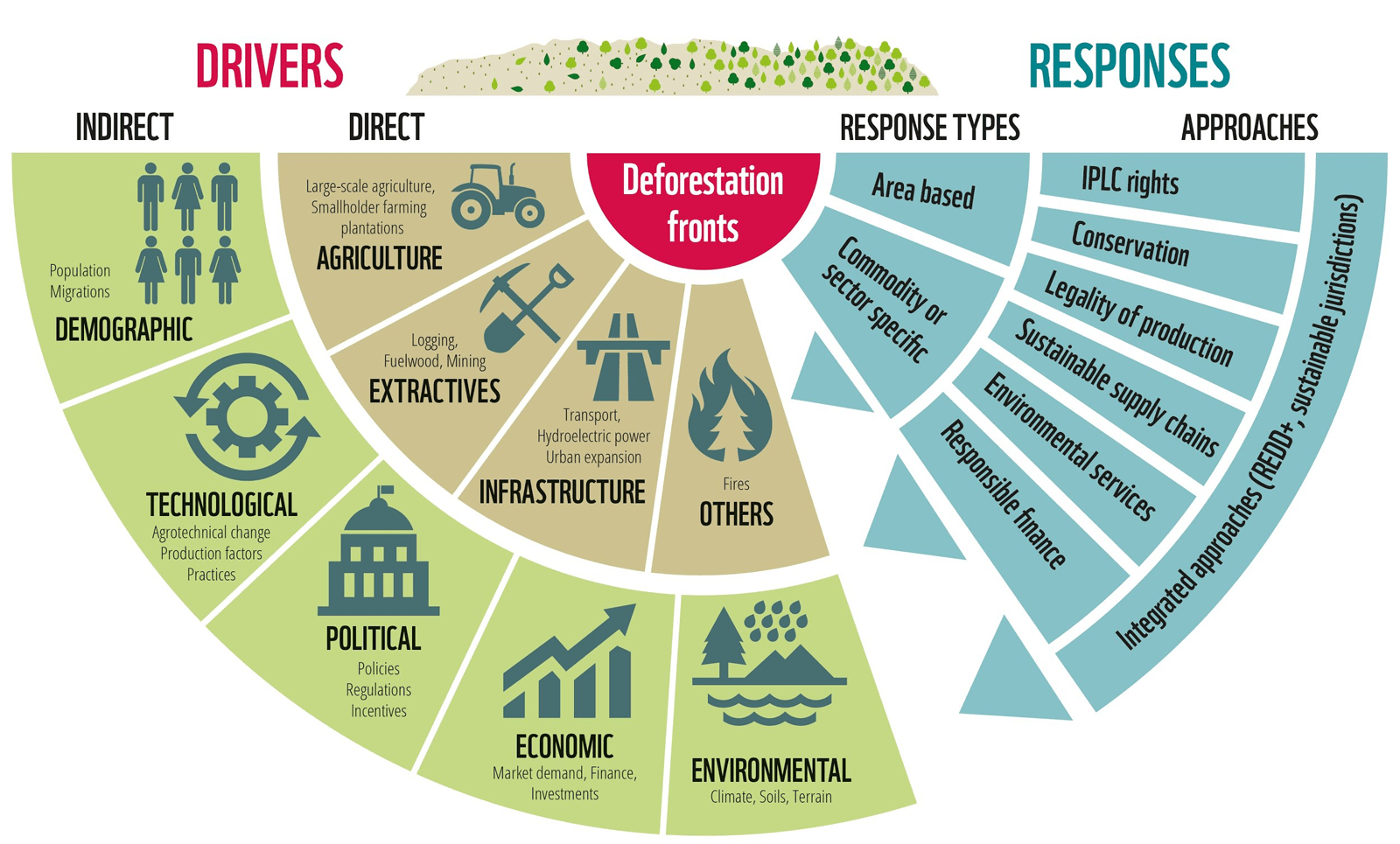
Deforestation Fronts – WWF (n.d.)
The impact of forest cover loss from human intervention varies based on the cause. Logging in plantation forests causes short-term environmental impacts, as these areas can eventually regrow. However, clearing the Amazon rainforest for farming permanently transforms the ecosystem.
While almost all deforestation occurs in tropical regions, a significant portion of it is driven by the demand for agricultural inputs that are ultimately consumed elsewhere in the world.
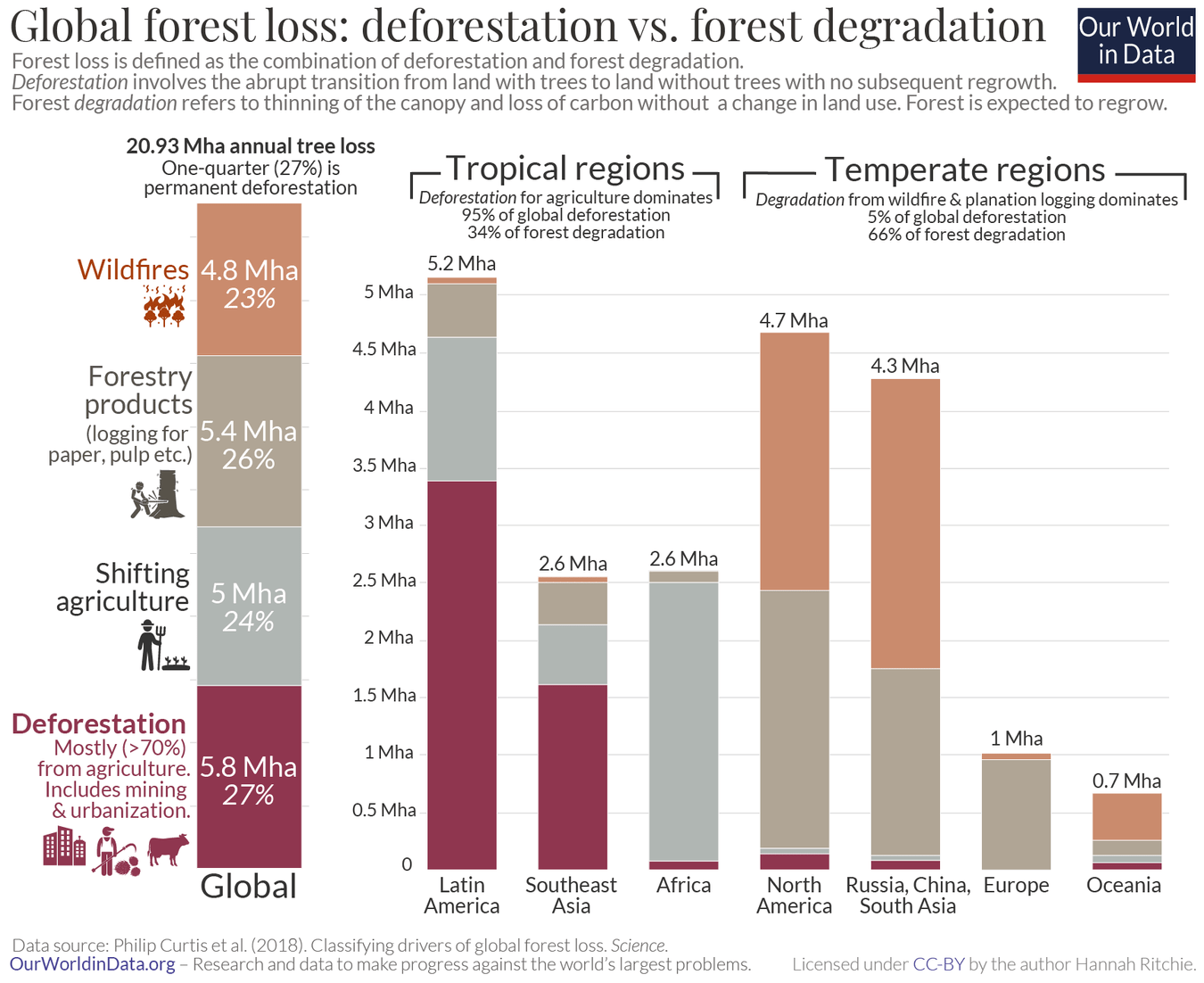
Deforestation and Forest Loss – Our World in Data (February 2021)
To reduce the negative environmental impact generated by its demand, the EUDR prohibits the sale of any product that uses the following seven commodities or their derivatives sourced from deforested or degraded land after December 31, 2020.

The Race to Map the World and Protect $110 Billion of Trade – Bloomberg (June 1, 2024)
The current list of commodities averages out to $110 billion in trade, representing a sizeable portion of output for many of the EU’s trade partners. To ensure compliance, companies must ensure traceability of their supply chains down to the geolocation of the plot of land used to grow their inputs.
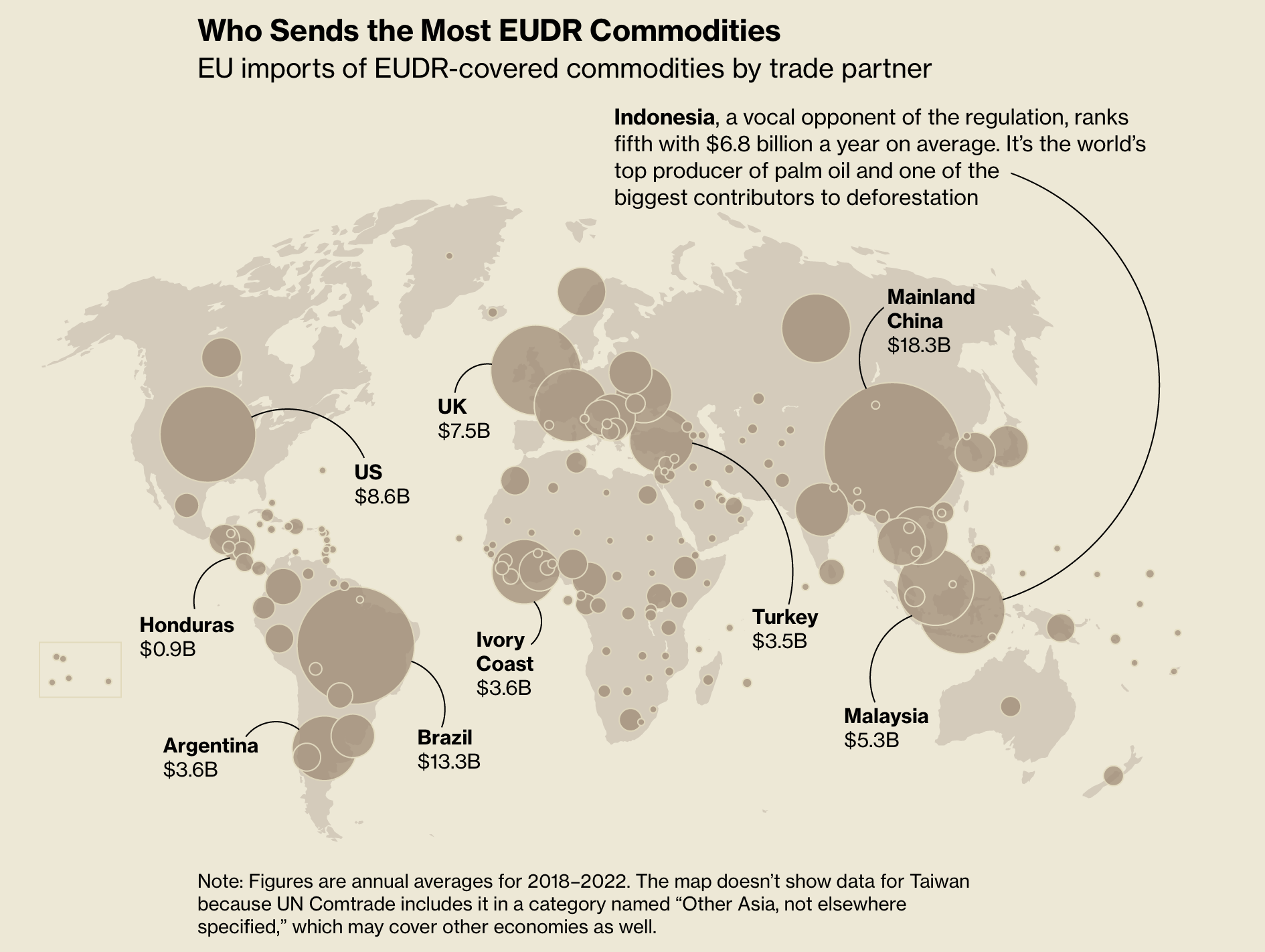
As a percentage of their exports, these commodities represent more than 8% of total exports for many countries in Africa and between 3% to 5% for many countries in South America, Asia and Europe.
A large majority of suppliers in these countries are racing against the clock to map their land and ensure compliance, or risk losing their livelihoods. The cost of non-compliance is high, with potential fines reaching up to 4% of the company’s turnover in the EU.
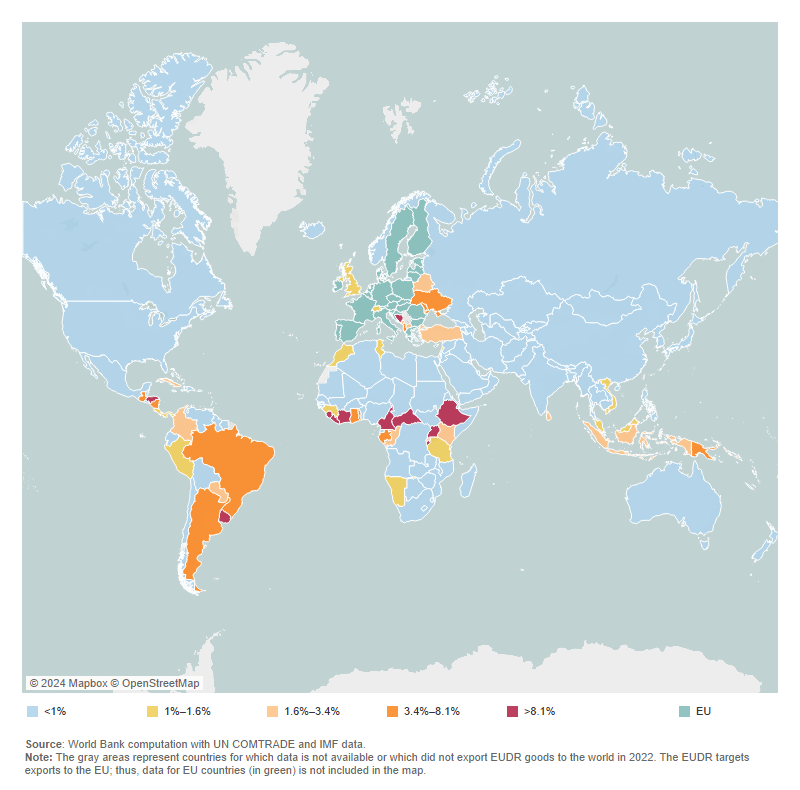
Trade and Development Chart: Impact of the EU deforestation regulation – World Bank Blogs (December 13, 2023)
So far, very few companies have programs in place to ensure traceability in their supply chains that meet the requirements of the EUDR.
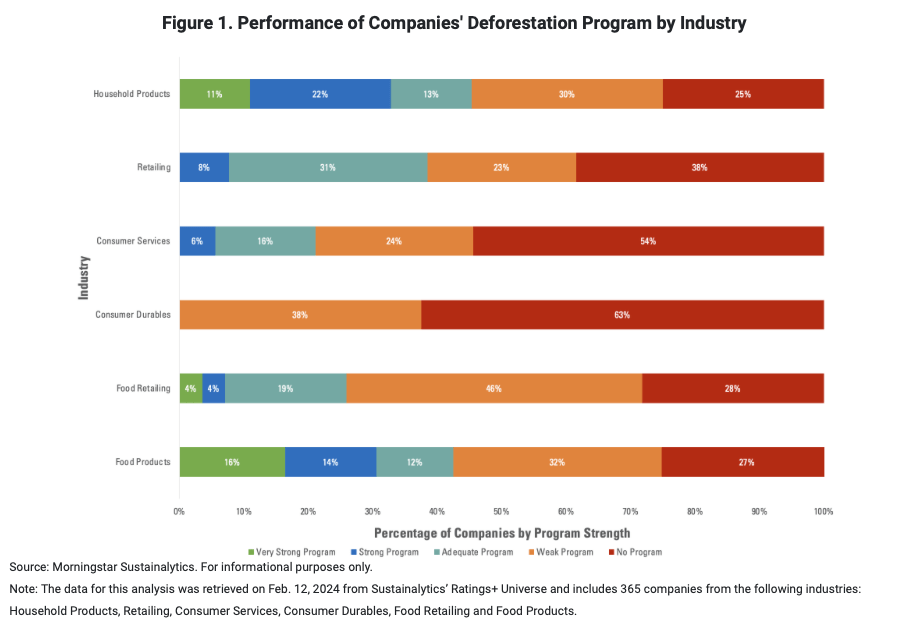
Navigating the EU Regulation on Deforestation-Free Products: 5 Key EUDR Questions Answered About Company Readiness and Investor Risk – Sustainalytics (April 2, 2024)
As countries continue to seek deadline extensions, the full effects of the EUDR will only become evident over time, reshaping global trade dynamics and driving towards more sustainable commodity sourcing practices in global supply chains.
Help us make this series even better! We would love to hear about sources we should follow to discover interesting projects and visualizations. Write to Bilal Siddika on LinkedIn or via email.
